Garage
Current model
WHat we are currently working on
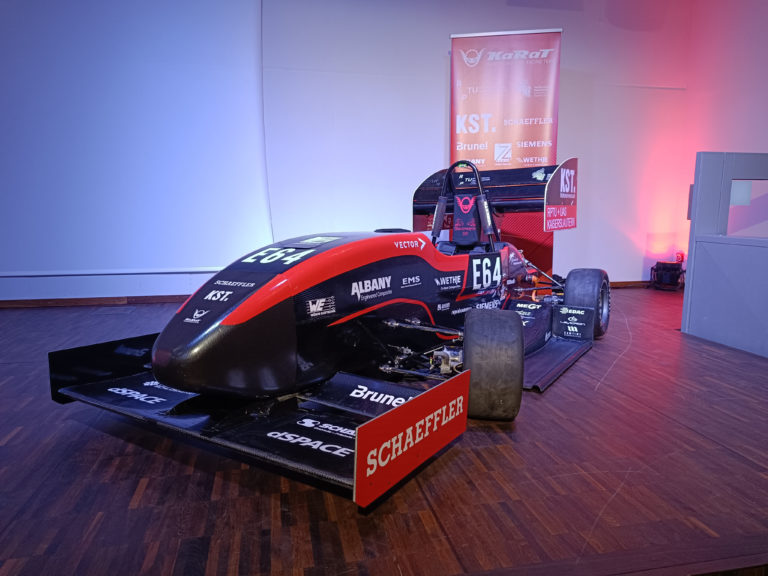
AWD
The e23 will have 4 wheel hub motors
Autonomous System
We will implement our first autonomous system.
New Chassis
In order to adjust to many changes we also designed a completeley new monocoque.
previous models
The history of karat cars
Electronyte e22
After we made a huge step from a technological point of view with the e21, we decided to stick to the concept for the 2022 season. We upgraded specific parts and fixed problems we had with the previous car, most notably in the steering system.
We were able to compete with the car at the FSSpain.

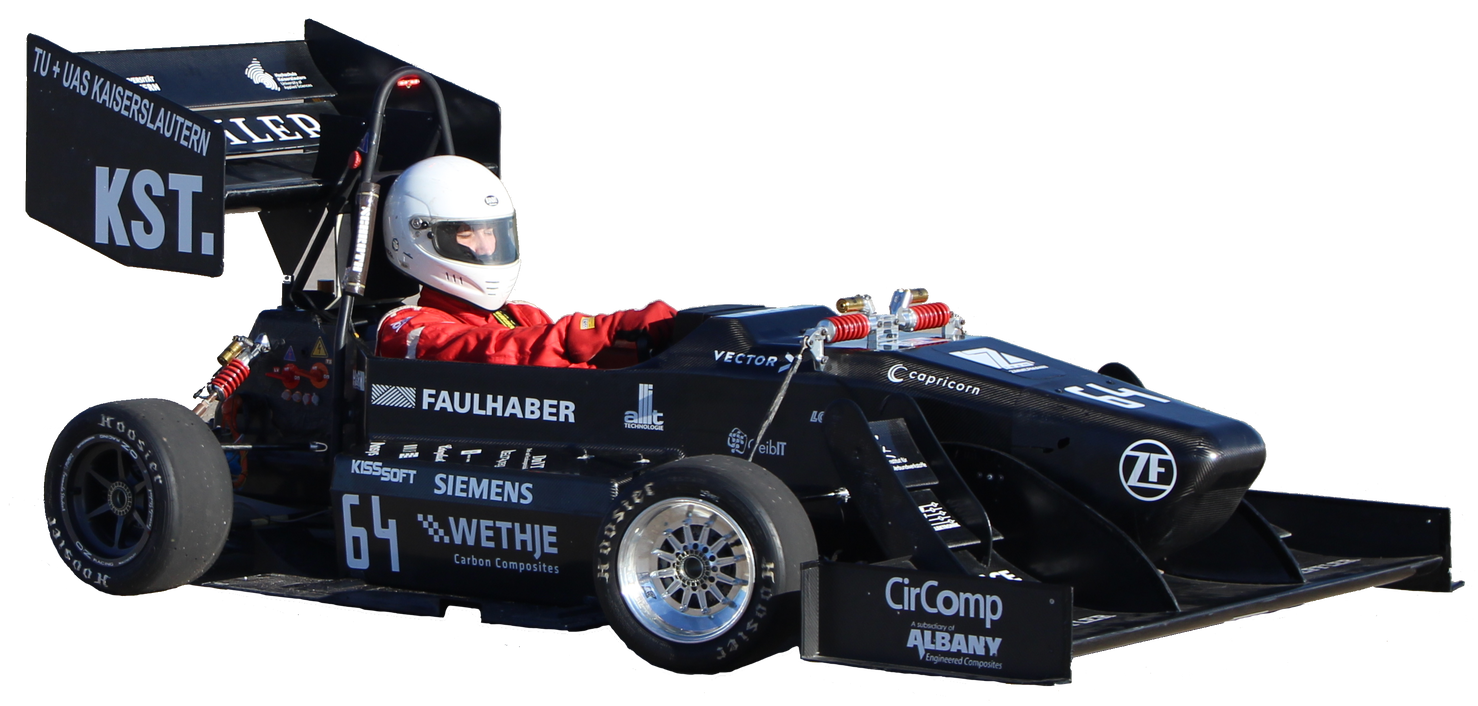
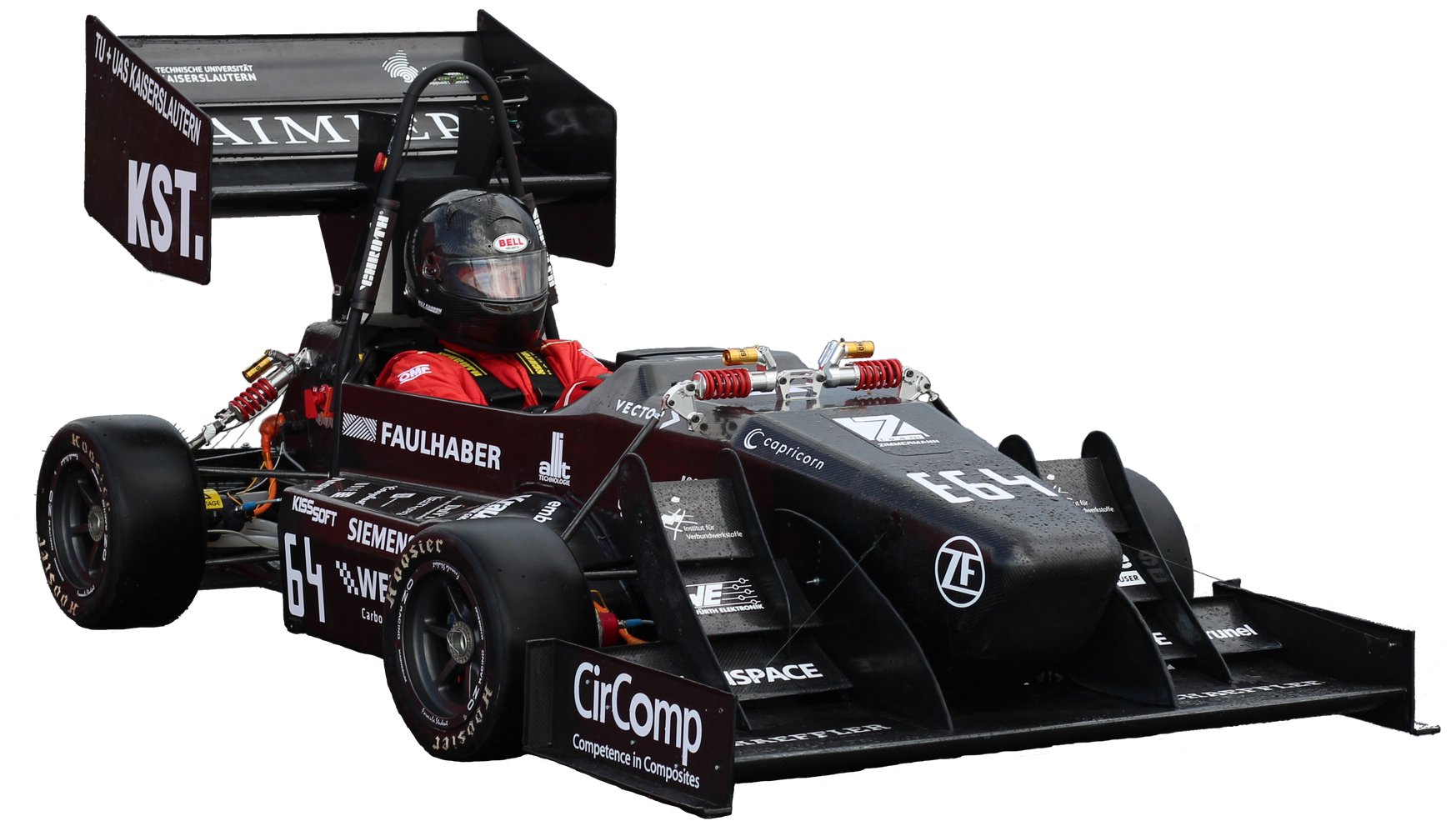
Electronyte e21
For the first year in the teams history we built a car over two years. The e21 started as the e20 for the 2020 season which was stopped due to COVID-19. Once the workshops were available again in late 2020, we finished the car and competed in the 2021 Formula Student competition, specifically at the FSAustria.
The e21 was the first car where we implemented all wheel drive and with this also a new chassis shape to optimally accommodate all the needed components.
Electronyte e19
Our electric race car from the 2018/2019 season – the Electronyte e19 – is one of our lightest and the most successful vehicle in the club’s history to date.
The e19 is a consistent further development of the e18 and was able to participate very successfully with a strong team in three major events of the Formula Student calendar. We were represented at the following events: FS Netherlands, FS East, FS Spain
On the events we drove in Spain as well as in Hungary in the Top10.
![]()
Efficiency (FSS)
![]()
Cost and Manufacturing (FSS)
![]()
Skidpad (FSEast)
![]()
Cost and Manufacturing (FSN)
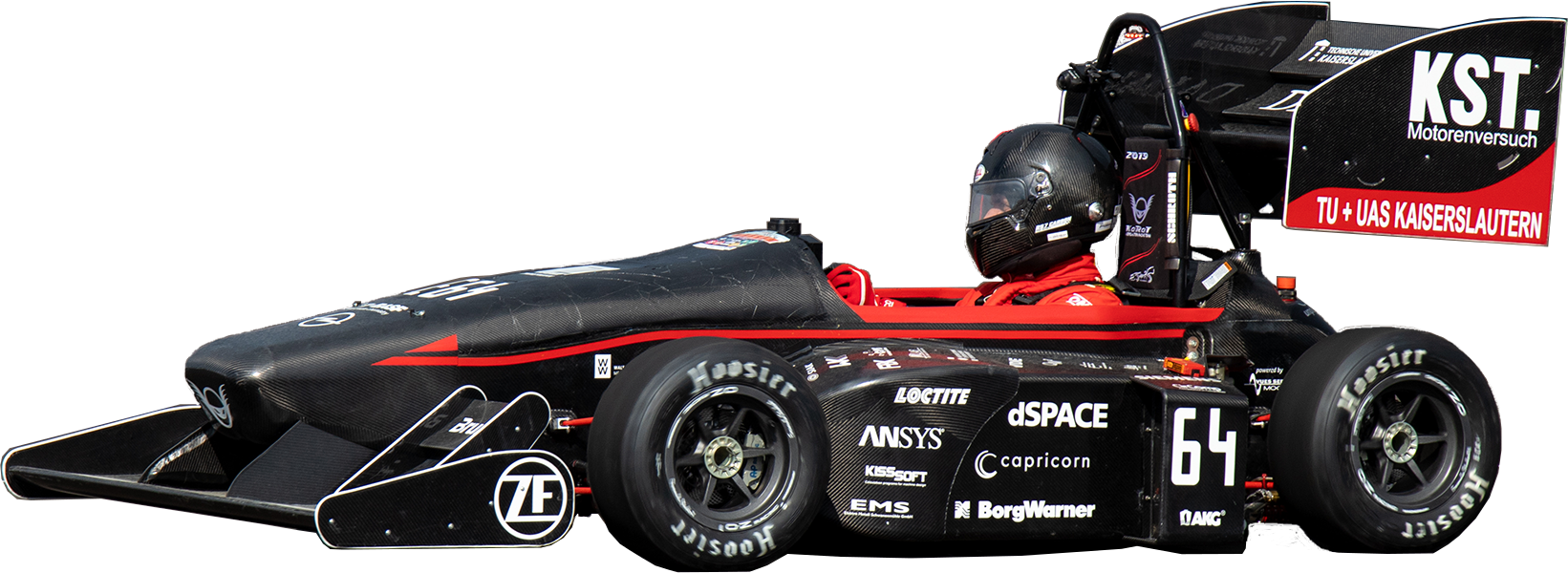
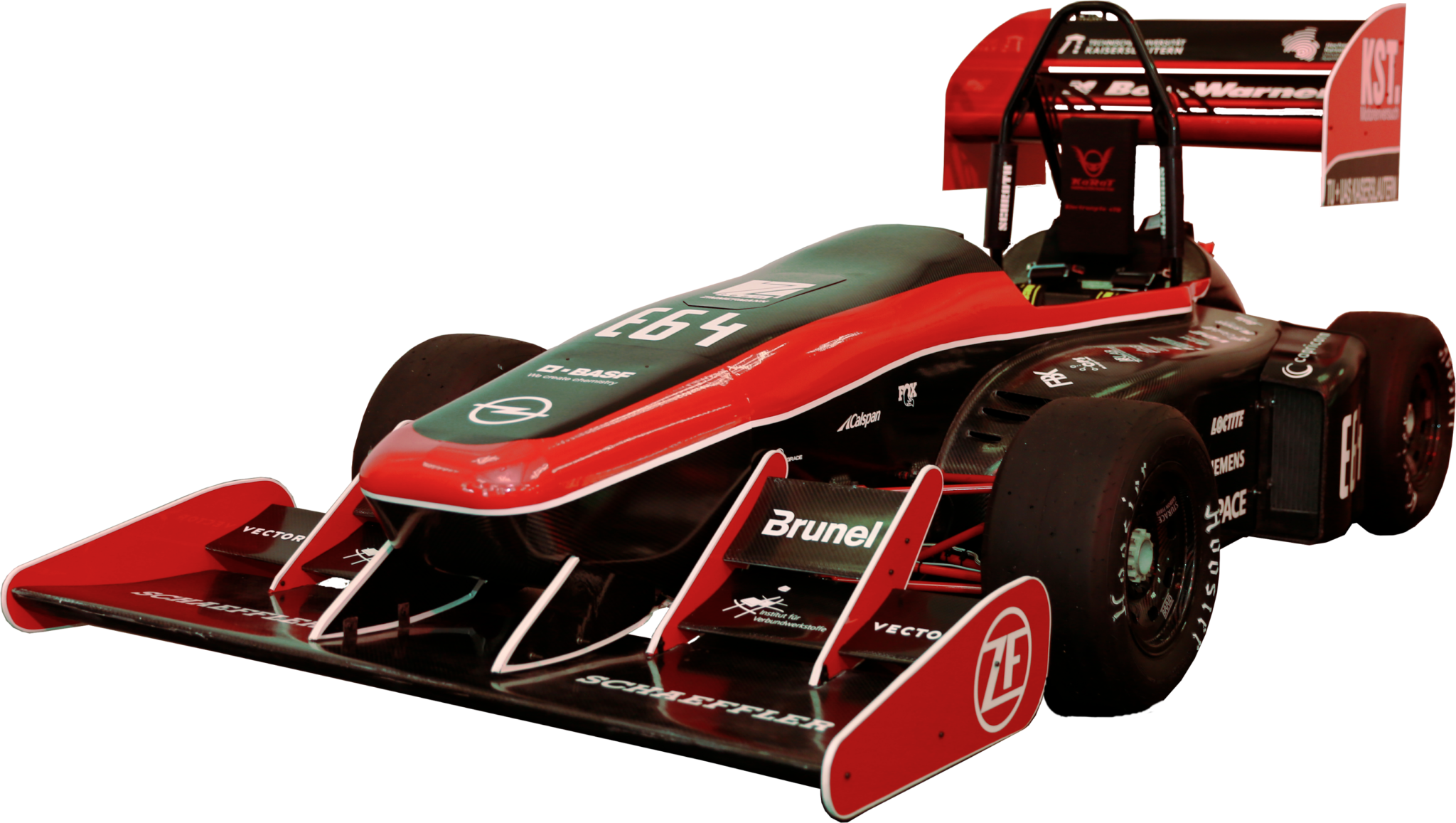
Electronyte e18
Our electric race car from the 2018 season – the Electronyte e18 – is one of our most beautiful and best vehicles.
With the e18, we participated in three Formula Student events. In the Netherlands, the Hockenheimring and in Barcelona we competed with the teams of the other universities.
We returned from Spain with very pleasant news. In our luggage we have a first place in the Cost Report and once again a top placement in the Efficiency ranking with a second place. Overall, we finished Formula Student Spain in a solid 14th place and with 499.6 points.
![]()
Cost and Manufacturing (FSS)
![]()
Efficiency (FSS)
Electronyte e17
The anniversary vehicle – the Electronyte E17! The product of 10 years of KaRaT, countless setbacks, new approaches and the unstoppable drive for improvement. The expectations for this special race car were enormous, yet they were clearly exceeded. With only 183 kg the E17 was not only the lightest, but also the most successful car in our club history. For the first time KaRaT was able to complete an Endurance race with an electric car. This succeeded not only once, but in all three season races. The highlight was the award “Most Energy Efficient Car” at the Formula Student Germany in Hockenheim.
These successes were achieved by implementing a reliable overall concept with local improvements and at the same time consistently eliminating sources of error from the previous season. The E17 was a big step in the right direction and is a very good basis for further fantastic race cars – made by KaRaT.
![]()
Efficiency (FSG)
![]()
Business Plan (FSS)
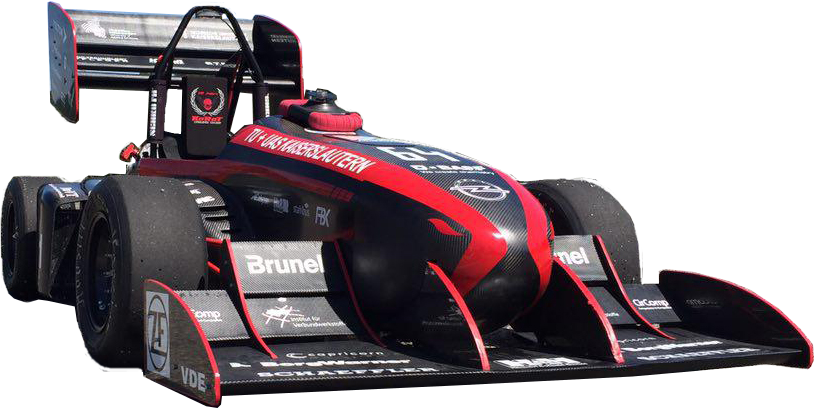
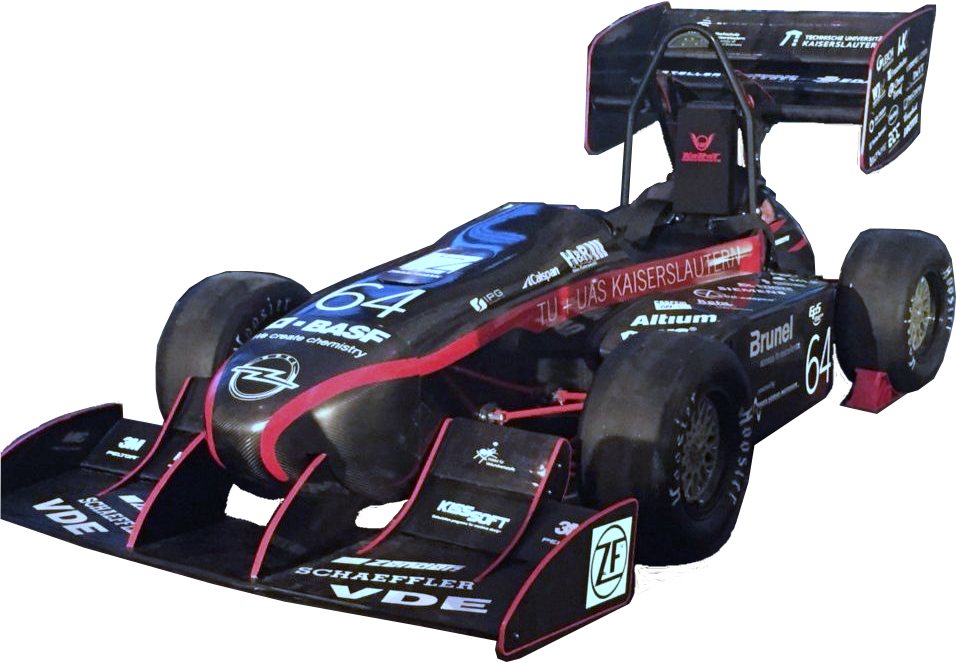
Electronyte e16
At 202.0 kg, the Electronyte E16 was just above our set target of under 200.0 kg, but a good 9.0 kg lighter than its predecessor. One of the innovations we were able to implement in the 2015/2016 season was the integration of the battery boxes into the monocoque. This made it possible to dispense with a double lateral safety structure, resulting in a significant weight saving. There were also further innovations in the area of power electronics: in that season we relied on Bamocar converters and integrated them with the motors in a powertrain box.
Electronyte e15
At 211 kg, the Electronyte E15 was around 22 kg heavier than its predecessor. This increase in weight was due to a change in the safety structure of the racing car and changes in the rules governing the battery containers, which were now made of steel in the E15. The E15 was powered by two powerful electric motors, each producing 40 kW. Improvements were made above all in the area of aerodynamics and power electronics, which enabled better overall airflow and stable operation of the vehicle at the events.
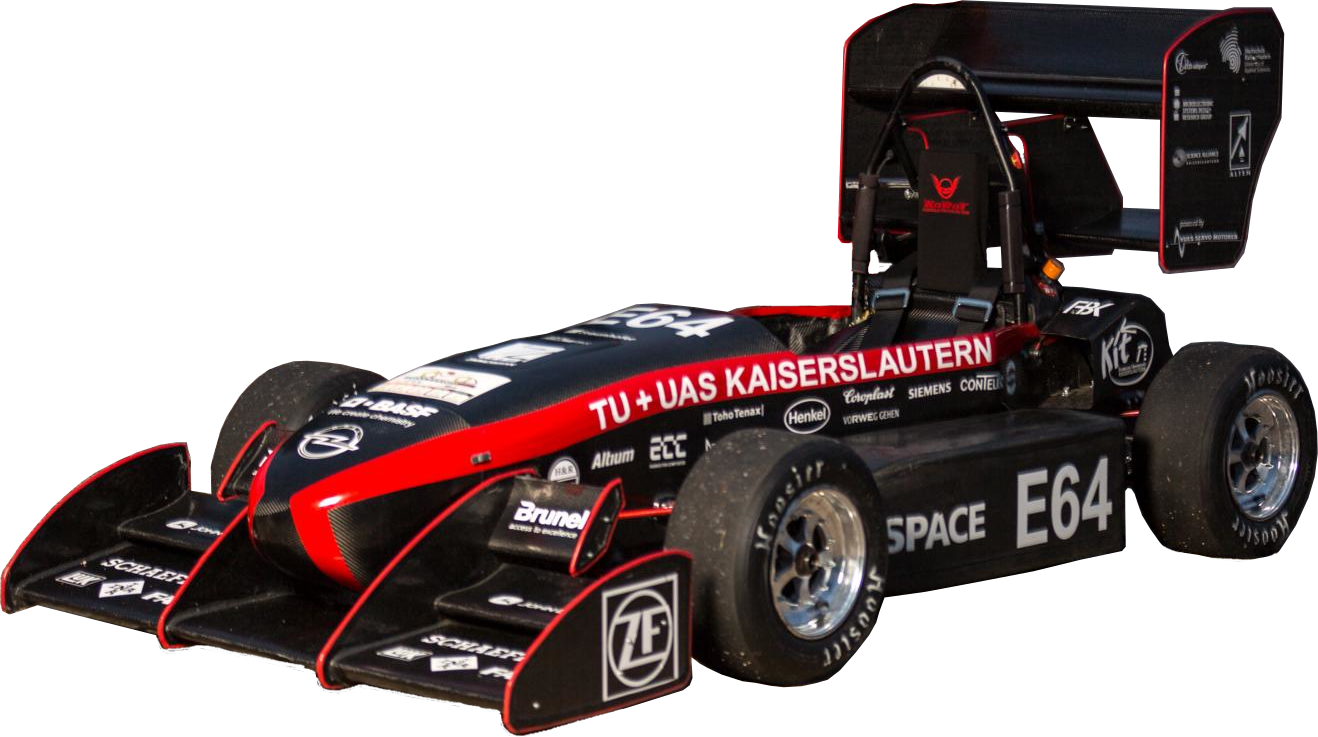
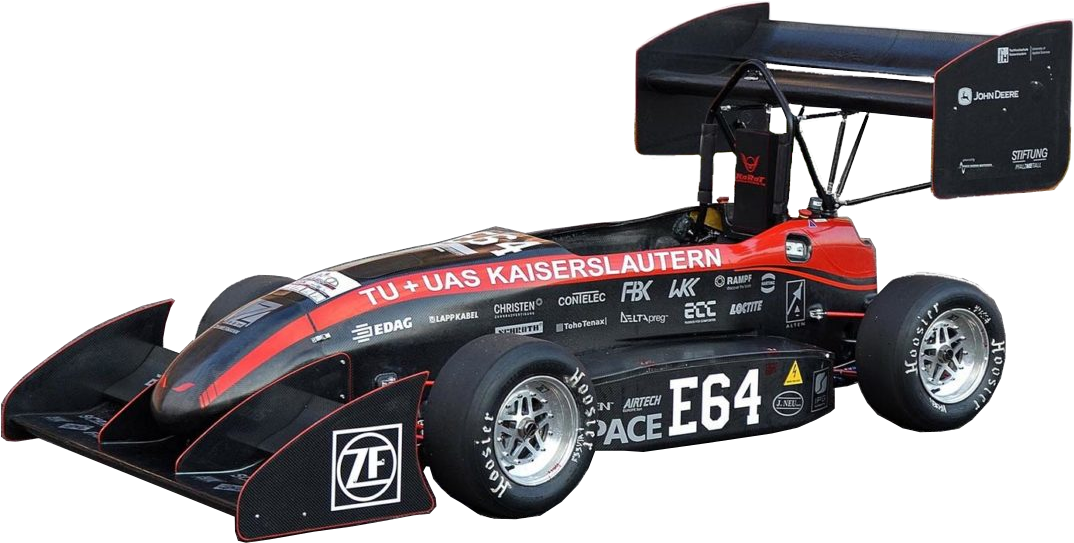
Electronyte e14
At around 190kg, the Electronyte E14 is KaRaT’s lightest vehicle to date. One of the reasons for this was the switch from foam to aramid honeycomb in the area of the safety structures, which have greater rigidity and strength for the same weight. The battery of the 90 kW electric racing car consisted of 216 lithium polymer cells and stored 6.6 kWh. With batteries, the battery boxes already accounted for 46 kg of the total weight. An unusual feature of this model was the use of air-spring damper units to save weight compared with the usual steel-spring damper units.
Electronyte e13
The second all-electric race car of the Kaiserslautern Racing Team built on the experience gained with the Electronyte E12. This made it possible to significantly reduce the overall weight and shorten the car overall. The newly designed carbon fiber monocoque, whose rear end was integrated again, also contributed to this. Components suitable for automobiles were now used in the powertrain, which significantly increased reliability.
The lithium-polymer battery was self-built for the first time. Lightweight materials were used for the housing. In addition, the battery was designed to save space and be easily accessible. This allowed for easy cell replacement and quick maintenance.
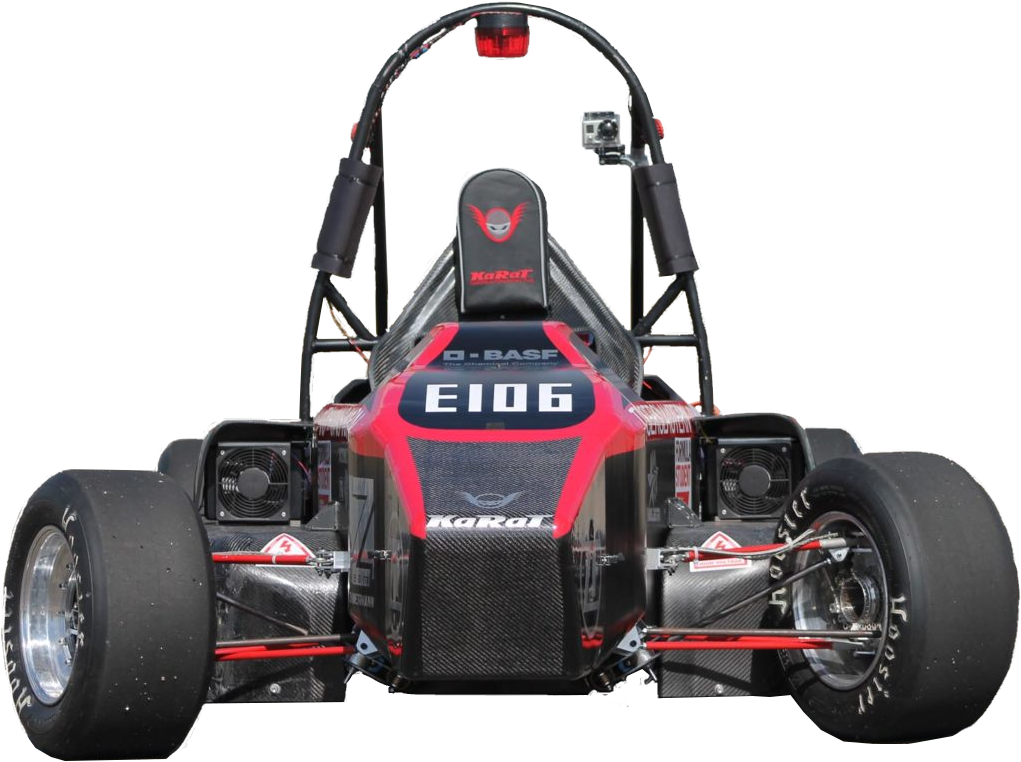
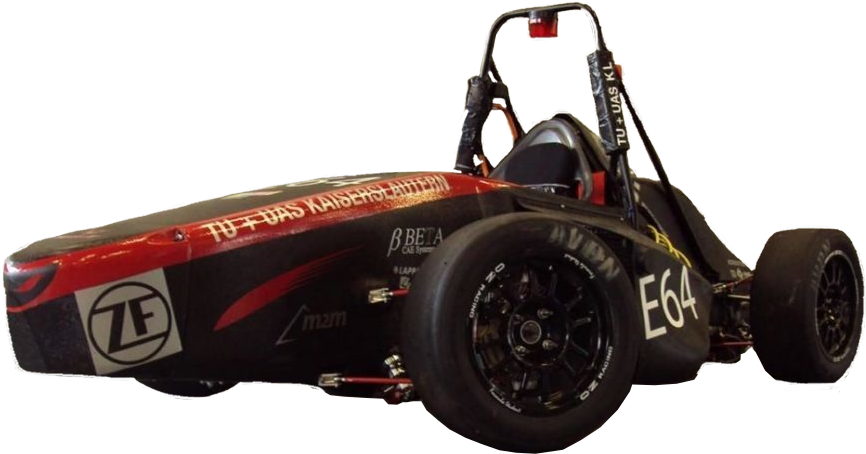
Electronyte e12
For the 2012 season, the team ventured to switch to a race car with electric drive. The mechanical components were largely retained so that the team could concentrate on developing the electrical components. Only for the power transmission did a new, single-stage spur gearbox have to be developed. The energy is supplied by a lithium iron phosphate battery with 936 cells and a capacity of 7 kWh. The maximum output of the two synchronous motors was 85 kW, due to the regulations.
Carbonyte 11
With the chassis of the Carbonyte 11, KaRaT returned to the tradition of the CFRP monocoque with fully integrated rear frame. The CN11 nevertheless had to record a weight increase of around 10 kg, which was due to changes in regulations. However, thanks to the hybrid construction of steel and aluminum, the weight of the control arms was reduced to a minimum. The special feature here was the bonding of components made of different materials. Just like the previous year’s model, the CN11 offered a programmable ECU to adjust the engine, which helped this model achieve a powerful 82 hp.
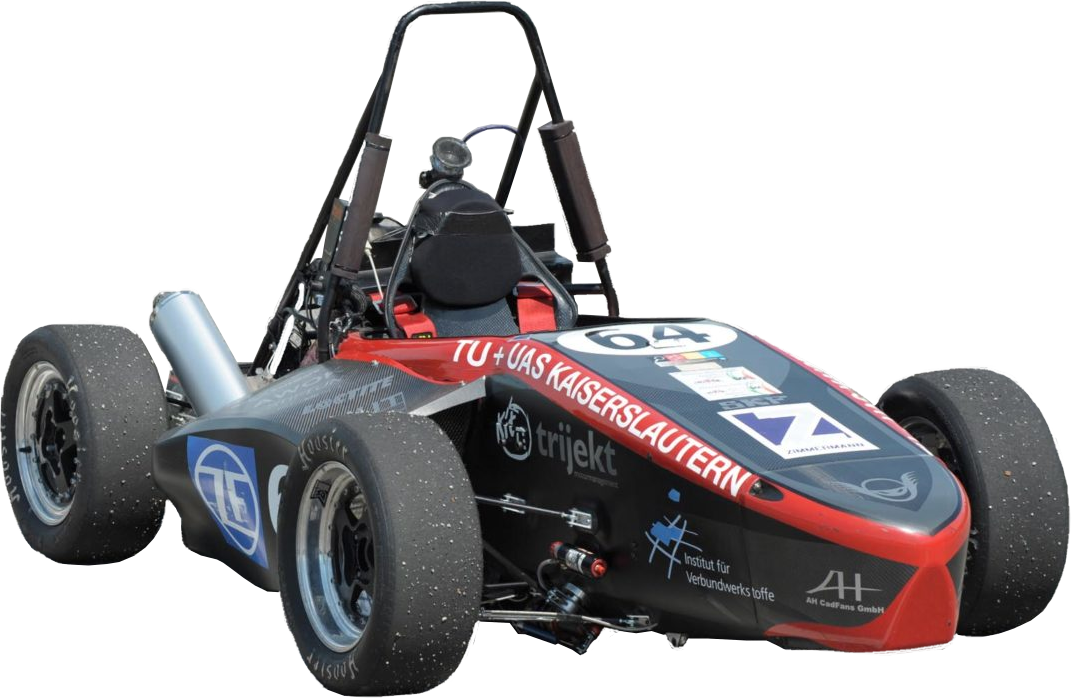
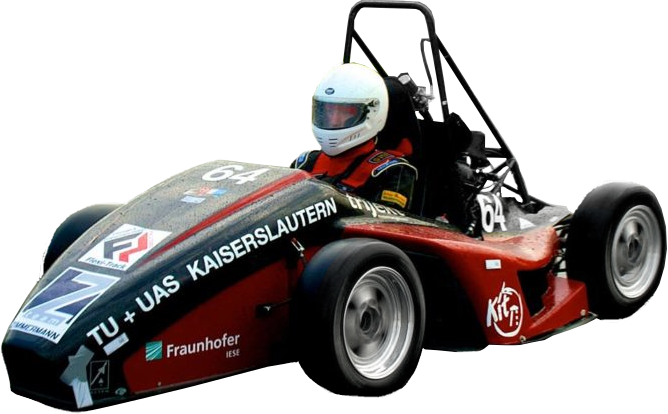
Carbonyte 10
Due to a lack of know-how, the Carbonyte 10 had to switch to a trellis frame. Despite this technical step backward, the vehicle weight was further reduced compared with the previous year, so that the scales stopped at 260 kg in 2010. Furthermore, the CN10 received a freely programmable engine control system, which allowed the engine characteristics to be freely adjusted.
Carbonyte 09
Due to the global economic crisis, sponsorship money was scarce in the 2009 season. Nevertheless, some innovations were worked out and components, such as the intake tract and exhaust system, were improved, resulting in an increase in performance. The CN09’s chassis was constructed entirely from high-strength aluminum and FEM-simulated. It was also possible to retain the principle of the CFRP monocoque with steel rear frame despite the financial cuts; optimization was even possible.
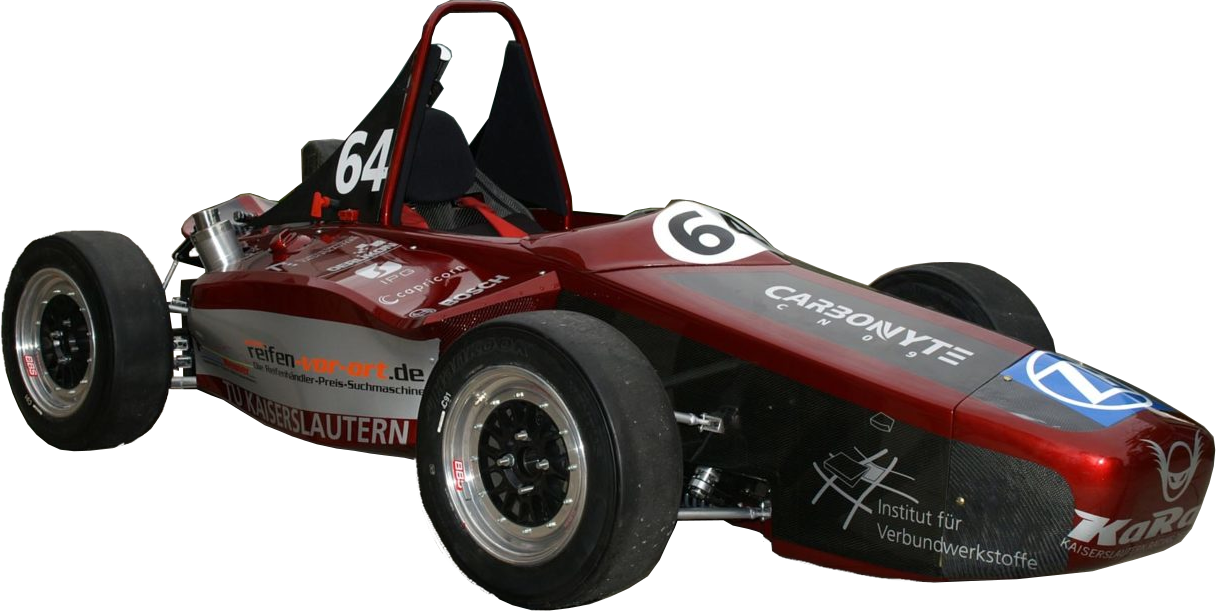
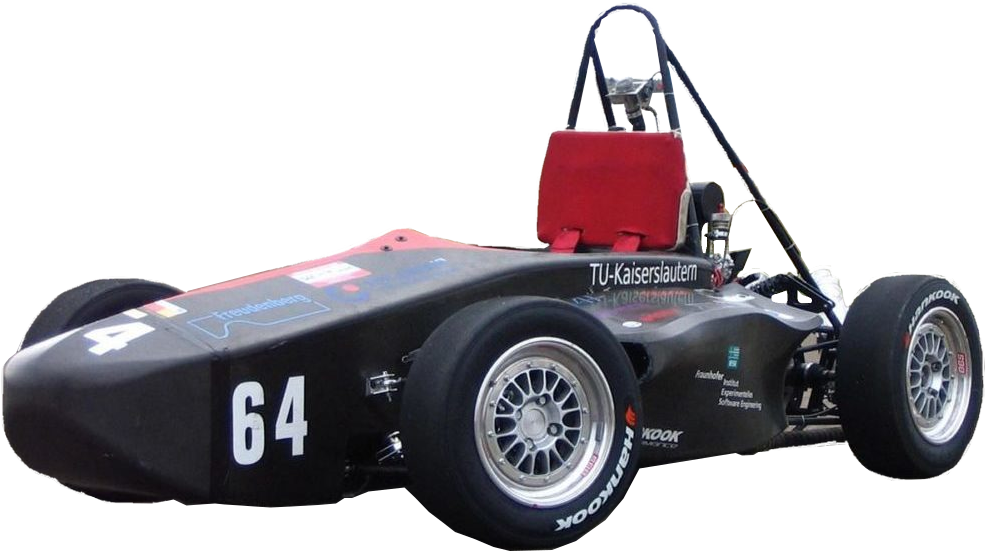
Carbonyte 08
The Carbonyte CN08 was the team’s first race car after the club was founded in 2007. The name was chosen accordingly, as as many components as possible were to be made from the lightweight CFRP. One example of this was the steering wheel, which could also provide the driver with information via an integrated screen. The Carbonyte 08 was the first first-year Formula Student car based on a carbon fiber monocoque. The CN08 was powered by a Suzuki GSX-R 600 motorcycle engine, which was able to produce over 76 horsepower thanks to an optimized intake tract. The vehicle was thus able to accelerate to 100 km/h in under 4 seconds.
